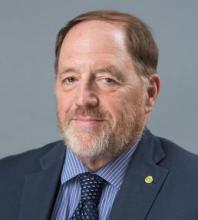You are here
Mainstream economics’ mediaeval inflation mmedicine
Dec 30,2023 - Last updated at Dec 30,2023
AUSTIN — When assessments of the quasi-inflation of 2021-22 appeared in major US media outlets this month, the prognosis was good: The fever has receded and may already be gone. The latest reports on personal consumption expenditures were jubilant. If trends continue, “such a success would be likely to shape [US Federal Reserve Chair Jerome Powell’s] legacy”, noted Jeanna Smialek of The New York Times.
Smialek’s article illustrates the fetish of Fed worship. The two economists she quotes, a former Fed official and a banker, are resolute in crediting Powell and his colleagues. “The Fed right now looks pretty dang good,” says one. “Certainly they’ve done very well,” says the other. Still, some readers may harbour doubts, because, as Smialek notes, we have “an outcome that [the Fed’s] own staff economists viewed as unlikely just six months ago”.
What should we make of this? Supposedly, the Fed’s actions “played a role in … keeping consumers from adjusting their expectations”. Yet, none of the experts, including the professionals who guide policy, shared the inflation optimism now attributed to the consuming masses or even detected its presence. With all their surveys and all their models, they were surprised.
Smialek admits that other factors were at work, noting that “higher interest rates didn’t heal supply chains”. She could have gone further, reminding readers that inflation peaked back in June 2022, only three months after the Fed started hiking interest rates. At that time, the Fed’s policy rate had risen just 75 basis points, and no one knew how much higher it might go. In fact, we have no evidence that monetary policy had any significant effect on the course taken by prices — certainly not before the June 2022 turning point, and not thereafter, either.
In modern medicine, a specific diagnosis normally leads to a specific treatment. But that is not the case in modern economics. Instead, the absence of an orderly sequence in the recent episode recalls the medieval approach to medicine, according to which all disease stemmed from an imbalance of the four bodily “humours”. And, as in pre-modern medicine, the treatment is always the same, regardless of the nature of the humoral imbalance. Mediaeval doctors drew blood; modern central bankers raise interest rates. The parallel is exact, because the thinking hasn’t changed.
In mainstream macroeconomics today, blood, phlegm, yellow bile, and black bile have been replaced by money, government spending, jobs, and expectations. While the few remaining monetarists blame “money printing”, fiscalists focus on budget deficits. Then there are the Phillips-curve holdovers, for whom a low unemployment rate must signal danger. Expectations theories cover the gaps left by the other three.
Consider Lawrence H. Summers, the Harvard University professor and former US Secretary of the Treasury whom The Financial Times rightly describes as “one of the most influential economists of our time”. From early 2021, he was also America’s leading inflation hawk, predicting high and persistent inflation and demanding sharp increases in interest rates.
Summers’s early analyses boiled down to two claims: the labor market was too hot, and fiscal stimulus, pandemic relief, infrastructure spending, investment incentives, was too strong. The first concern rested on the Phillips curve, a relic of the 1960s; the second was informed by the experience of the Vietnam war, also dating to the 1960s. As Summers reveals in a recent interview with The Financial Times, his diagnostic tools have not evolved much since his adolescence. Though he concedes that “it certainly hasn’t been a glorious period for the Phillips curve”, he then hastens to add: “But I’m not sure we have a satisfactory alternative theory.”
Assuming that “we” refers to mainstream economists, Summers is correct. He relegates Milton Friedman’s monetarism to “extreme” cases like Argentina, and he is ambivalent about expectations. Under the expectations theory, he notes, “inflation is set by inflation expectations, and inflation expectations are set by the people who form inflation expectations”. Given this circular reasoning, Summers concludes, “inflation theory is in very substantial disarray”.
Except that it’s not. There was, and is, a competing view, dismissed at the time as “team transitory”. Summers acknowledges our existence, and he even concedes that we have prevailed for now. But he cannot bring himself to confront our arguments. Instead, he claims: “Ironically, if team transitory proves to be vindicated, it will be because their policy advice was not taken. It will be because the Fed moved strongly enough.” Here we encounter the late mediaeval spirit in full flower. The counselors are clueless, and the shaman is blind, but his magic powers cannot be challenged.
On December 18, 2023, Washington Post reporters Rachel Siegel and Jeff Stein wrote that “the economy is ending the year in a remarkably better position than almost anyone … in mainstream economics had predicted”. The reference to “mainstream” reminds us that there is an alternative, whose predictions, on this occasion, were more accurate. The Post writers explain the temporary factors that actually drove the 2021-22 quasi-inflation: energy shocks, supply-chain disruptions, housing. And then they venture a step closer to the forbidden line. While still crediting the Fed, they also point to steps that the Biden administration took to address these specific problems.
This is half right. White House policies — including sales from the strategic petroleum reserve and pressure on ports to stay open around the clock — were important. So were market forces and the simple passage of time. Fed policy had nothing to do with it.
Of course, conceding that much would be a step too far. It would mean that economics is moving from the age of bloodletting and incantations to one inspired by, say, Louis Pasteur (a pioneer of immunology) and Alexander Fleming (the discoverer of penicillin). If economics finally became a discipline in which specific diagnostics led to specific cures, the necromancers would have to go. We are not there yet, but perhaps that time will come.
James K. Galbraith, professor of Government and chair in Government/Business Relations at the University of Texas at Austin, is a former staff economist for the House Banking Committee and a former executive director of the Joint Economic Committee of Congress. From 1993-97, he served as chief technical adviser for macroeconomic reform to China’s State Planning Commission. He is the co-author (with Jing Chen) of the forthcoming “Entropy Economics: The Living Basis of Value and Production” (University of Chicago Press). Copyright: Project Syndicate, 2023. www.project-syndicate.org














Add new comment